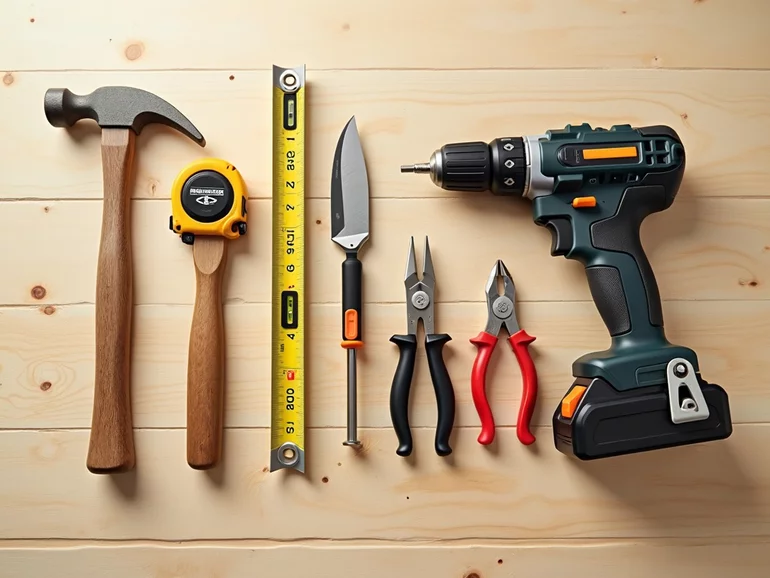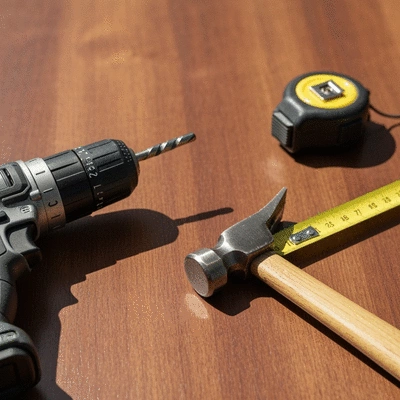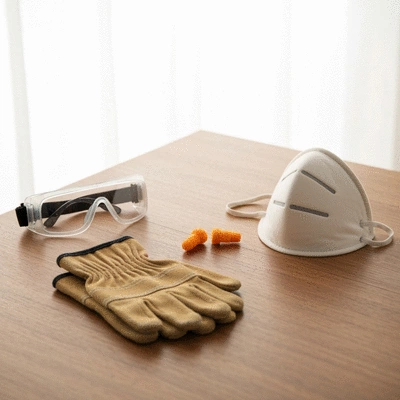Why Essential Tools Matter
Beginner Benefits
- Builds fundamental skills
- Increases confidence
- Cost-effective solutions
Quality Impact
- Durability (lasts longer)
- Precision (accurate results)
- Safety (reduces accidents)

Starting your DIY journey can feel overwhelming. With so many tools and safety precautions to consider, where do you even begin? Here’s what you need to know to set yourself up for success in your home remodeling endeavors!
This visual outlines the crucial aspects of DIY home remodeling for beginners, focusing on why essential tools and safety gear are paramount for successful and secure projects.

When embarking on your home remodeling journey, having the right tools can make all the difference. At Home Remodeling Insights, I often emphasize to my readers that choosing essential DIY tools isn’t just about convenience; it’s about ensuring your projects are successful and enjoyable. Whether you’re a seasoned DIYer or just starting, understanding which tools are necessary will set you up for success. Learn more about the economic impact and trends in home remodeling from authoritative sources like the National Association of Realtors.
This isn’t just about aesthetics; it’s about functionality! Proper tools lead to better results, saving you time and frustration along the way. Let’s dive into why every beginner should have the right tools at their disposal.
As a beginner, the world of home remodeling can feel overwhelming. That’s why I believe that having a solid set of basic tools is crucial. Here are a few reasons why:
It’s like having a toolbox filled with opportunities! When you’re equipped with the right tools, you can take on various projects with enthusiasm and ease.
Let’s talk about quality. As someone who has tried both cheap and high-quality tools, I can tell you that the difference is significant. Here’s how quality tools can impact your remodeling projects:
In the end, investing in quality tools means investing in the success of your projects! It allows you to work efficiently and achieve the desired results without unnecessary setbacks.
Now that we’ve covered the essentials of DIY tools, let’s shift gears to something equally important—safety. Safety should never take a backseat when you’re diving into home remodeling. It’s essential to protect yourself while you’re creating your dream space.
Being aware of the potential hazards and preparing adequately can help you avoid accidents and ensure a more enjoyable DIY experience. To understand more about the broader concept of home improvement, including safety aspects, Wikipedia offers a comprehensive overview. Let’s explore some fundamental safety measures you should consider.
Starting any DIY project without the right safety gear is like jumping into a pool without checking if there’s water! Here’s a must-have list of safety gear for beginners:
By wearing the right gear, you’re not just following a guideline; you’re actively taking steps to keep yourself safe! Safety isn’t just about avoiding injuries; it’s about creating a comfortable and confident work environment.

Even with the best intentions, beginners can make mistakes that lead to accidents. Here are a few common pitfalls to watch out for:
Recognizing these common mistakes is the first step in ensuring a safe DIY experience. Remember, a cautious approach is critical when you’re venturing into home remodeling!
Let’s circle back to two essential pieces of safety gear: goggles and gloves. These might seem simple, but they play a big role in protecting you during various tasks. Here’s why:
Investing in good-quality safety gear is a smart choice. They’re small steps that can lead to big differences in your DIY journey!
As we continue on this exciting DIY journey, it’s time to discuss the ten essential tools every beginner should own! Having a well-rounded tool kit is critical for taking on various projects with confidence.
Let’s explore these tools and why they’re indispensable for home remodeling enthusiasts!
The cordless drill is a true game-changer in any DIY toolkit. It’s versatile, powerful, and perfect for a variety of tasks from drilling holes to driving screws.
A solid screwdriver set is essential for any homeowner. Make sure to have different types (flathead and Phillips) and sizes to tackle various screws.
A hammer is a classic tool that you can’t go without! Understanding the different types—like claw or sledge—can help you choose the right one for the job.
Precision is key in remodeling, and a tape measure ensures you get accurate measurements every time. Learn how to use it effectively to avoid costly mistakes!
Whether you’re hanging shelves or installing new cabinets, a level ensures everything is perfectly straight. It’s a small investment with a significant impact!
A circular saw can cut through various materials with ease. Remember to prioritize safety and start with simple projects as you get accustomed to its use.
This tool is fantastic for attaching trim and molding quickly. However, it requires a bit of practice, so start slow to get comfortable with it!
An orbital sander can save you tons of time and effort when finishing surfaces. By using it properly, you can achieve professional-looking results!
From opening packages to scoring materials, a utility knife is an underappreciated tool that you’ll find useful in many situations.
Finally, don’t forget a sturdy tool bag or kit! Keeping your tools organized will not only save time but also protect them from damage.
Using a stud finder can prevent accidents when hanging heavy items. It’s a small tool that can make a big difference in your projects!
With these tools in your arsenal, you’ll be ready to tackle a variety of home improvement projects with confidence. Remember, the right tools can take your DIY experience from good to great!
When purchasing your DIY tools, consider investing in quality rather than quantity. A few high-quality, versatile tools will serve you better than a large collection of low-quality items. Look for tools with good warranties, as this often indicates a manufacturer’s confidence in their durability.
Starting your DIY home remodeling journey can be both exciting and a bit daunting! Every project you take on has the potential to enhance your living space while building your confidence as a homeowner. At Home Remodeling Insights, I believe that with each successful task, you’ll not only improve your home but also your skill set. So, grab those tools and let’s get started!
As you tackle various projects, remember that building skills takes time and practice. Don’t be afraid to make mistakes; they often lead to the best learning experiences. Each time you complete a project, you’ll find yourself gaining more confidence, and soon enough, you’ll be tackling even the more complex renovations! The rising popularity of DIY and home improvement, as detailed by Bazaarvoice's consumer trends report, highlights a growing community ready to share experiences and knowledge.
Learning the ropes of DIY can feel overwhelming initially, but breaking it down into manageable projects can make a world of difference. Here are some simple steps to help you grow your skills:
By focusing on your progress, you’ll feel a sense of accomplishment with each project. Plus, with the right tools and a bit of creativity, there’s no limit to what you can achieve!
Investing in quality tools is essential for your long-term success in DIY projects. Quality tools will not only make your work easier but also save you money in the long run, as they tend to last longer and perform better. As a homeowner and DIY enthusiast, I always recommend prioritizing the following tools:
Consider starting with a basic toolkit and gradually adding to it as your skills progress. This way, you won’t feel overwhelmed by expenses while ensuring you have the tools necessary for your projects. Remember, a well-equipped toolkit is a cornerstone of successful DIY remodeling!
Connecting with fellow DIY enthusiasts can be incredibly motivating! At Home Remodeling Insights, I encourage you to share your experiences and learn from others in our community. Whether you’re just starting or you’ve completed several projects, your journey can inspire someone else.
Have you recently finished your first DIY project? I’d love to hear about it! Sharing your successes and even your challenges can create a sense of camaraderie and support among fellow readers. Plus, it’s a great way to reflect on how far you’ve come!
Don’t forget to subscribe to Home Remodeling Insights for regular tips and tool reviews. Staying informed about new tools and techniques can enhance your DIY experience. Let’s tackle those home projects together, armed with knowledge and a supportive community!
Here is a quick recap of the important points discussed in the article:
At Home Remodeling Insights, led by Madeline Birch, we empower homeowners to confidently navigate remodeling decisions by providing clear, practical advice on DIY projects versus hiring professionals. Join us to make your home improvement journey informed and successful.
